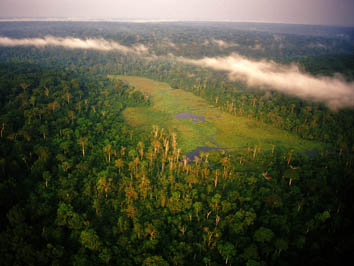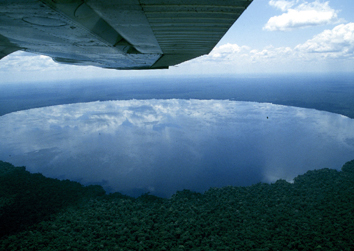In the next twenty years, with the rapid expansion and industrialization of extractive industries, we will see a dramatic reduction in the amount of wilderness outside of protected areas in central Africa. We are tackling this time sensitive issue, ensuring we have chosen the best areas to focus our conservation efforts and that protected areas are being effectively managed. In doing this we strive to find solutions that avoid adverse impacts on local communities, but rather benefit these people.
We work in two national parks, two wildlife reserves, Congo’s only community reserve and in thousands of square kilometres of wilderness on the periphery of these protected areas. WCS Congo offers varying levels of support and management according to the needs of each of these areas. We work closely with government and local stakeholders in all the wild places we strive to conserve.




